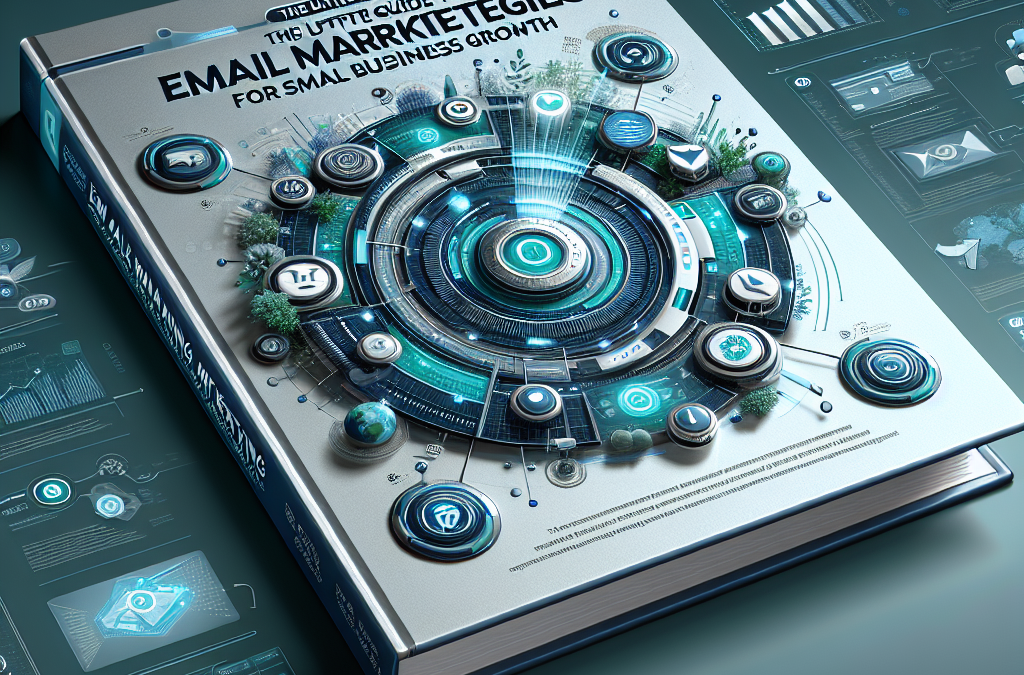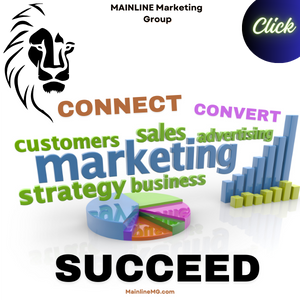- 1. Craft Personalised Email Campaigns
- 2. Segment Your Audience Effectively
- 3. Use Automation to Save Time
- 4. Optimize Email Subject Lines for Higher Open Rates
- 5. Incorporate Interactive Content
- 6. Implement Responsive Design for Mobile Users
- 7. Leverage Data & Analytics for Better Results
- 8. Test and Refine Your Campaigns Regularly
- 9. Integrate Social Media for Broader Reach
- 10. Ensure Compliance and Build Trust
1. Craft Personalised Email Campaigns
Understanding Personalisation in 2025
Personalisation remains a cornerstone of effective email marketing for small business growth in 2025. Customers now expect relevant content tailored to their preferences and previous behaviors. By personalising your emails, youâre more likely to engage recipients, build relationships, and foster loyalty.
Imagine sending a birthday offer to a customer or recommending products based on past purchases. Such personal touches can boost click-through rates by up to 47%, according to recent industry reports. This approach turns generic emails into valuable conversations.
To implement this, collect relevant data ethically and use automation tools to dynamically insert recipient-specific details into your emails. Remember, personalisation isnât just inserting the recipientâs nameâit’s about delivering meaningful, tailored content that resonates with your audience.
Actionable Tips for Personalisation
- Use customer data to segment your audience effectively.
- Implement dynamic content blocks within your emails.
- Test different personalisation strategies to see what resonates best.
2. Segment Your Audience Effectively
The Power of Segmentation
Segmentation is essential in maximizing the effectiveness of your email marketing for small business growth in 2025. By dividing your email list into smaller groups based on demographics, behavior, or purchase history, you can craft more targeted messages.
A well-segmented list can increase open rates by 26% and click-through rates by 39%, making it a crucial strategy for small businesses. For example, a clothing retailer might send different offers to men and women or to new vs. returning customers. This approach ensures your messages are relevant, reducing unsubscribe rates and boosting engagement.
Use your CRM or email marketing tools to automatically segment your list and update those segments regularly based on customer activity. Consistently refining segmentation allows you to deliver the right message to the right audience always.
Practical Segmentation Strategies
- Demographic segmentation (age, gender, location)
- Purchase behavior segmentation (repeat buyers, cart abandoners)
- Engagement level segmentation (active, inactive subscribers)
3. Use Automation to Save Time
Benefits of Email Automation
Automation continues to be a game-changer for small businesses looking to scale their email marketing for small business growth in 2025. Automated workflows ensure that your subscribers receive timely, relevant emails without manual effort.
Automations like welcome series, abandoned cart reminders, or post-purchase follow-ups can improve engagement and conversion rates significantly. For example, a recent survey shows that automated emails generate 320% more revenue than non-automated emails. This demonstrates their effectiveness in nurturing leads and driving sales.
Setting up automation might seem daunting, but with many user-friendly platforms available today, itâs accessible even for small business owners. The key is to start simple and expand your automation as you learn what works best for your audience.
Tips for Effective Automation
- Map out customer journeys and trigger points.
- Personalise automated emails based on user data.
- Regularly monitor and optimize your workflows.
4. Optimize Email Subject Lines for Higher Open Rates
The Art of Catchy Subject Lines
Your email subject line is the first impression and a critical factor for the success of your campaigns. In 2025, with inboxes flooded with messages, crafting compelling, clear subject lines is more important than ever to feature in your email marketing for small business growth strategies.
A captivating subject line can increase open rates by up to 50%. Tips include using curiosity, personalization, urgency, or offering a clear benefit. For example, âExclusive Deal Inside: Save 20% Today Only!â motivates recipients to open immediately.
Test different approaches through A/B testing to see what resonates most with your audience. Remember, honesty and relevance should never be compromised for clickbait; transparency builds trust and long-term customer relationships.
Best Practices for Subject Lines
- Keep it short and to the point.
- Use personalisation and recipient names.
- Incorporate actionable language or urgency.
5. Incorporate Interactive Content
Engaging Your Audience with Interactive Emails
In 2025, static emails are no longer enough to stand out. Interactive content such as polls, quizzes, or GIFs can significantly boost engagement rates. For small businesses, this is a powerful way to make your emails more memorable and drive action.
For example, a local gym could include a quick quiz about fitness goals, encouraging recipients to participate and learn more about their preferences. Such interactivity not only increases engagement but also provides valuable insights about your audience.
Tools like Mailchimp, HubSpot, or Campaign Monitor now offer easy-to-use features for creating interactive emails. Start small, test different formats, and analyze what drives the best response for your audience in 2025.
Tips for Incorporating Interactive Elements
- Use polls or surveys for feedback and preferences.
- Add GIFs or videos to make content dynamic.
- Embed countdown timers for sales or events.
6. Implement Responsive Design for Mobile Users
Why Mobile Optimization Matters
With over 65% of emails opened on mobile devices in 2025, responsive design isnât optional â itâs essential for successful email marketing for small business growth. If your emails donât look good on a smartphone, you risk losing potential customers.
Responsive design ensures your emails automatically adapt to different screen sizes, maintaining readability and aesthetic appeal. Companies that optimize for mobile see higher engagement rates, conversion rates, and ultimately, sales.
Start by testing your emails on various devices and using mobile-friendly templates. Clean layout, large clickable buttons, and concise content are best practices for optimizing mobile email experiences.
Best Practices for Mobile-First Emails
- Use single-column layouts.
- Make buttons big and easy to tap.
- Keep subject lines short for better display on mobile.
7. Leverage Data & Analytics for Better Results
Data-Driven Decision Making
Tracking and analyzing your email campaigns is vital for small business growth in 2025. Insights from open rates, click rates, conversions, and subscriber behavior help you refine your approach.
Tools like Google Analytics and your email platformâs analytics dashboards allow you to gather this data easily. Use these insights to test subject lines, copy, timing, and segmentation â improving your campaigns over time.
For example, if data shows most users open emails in the morning, schedule your campaigns accordingly. Data literacy empowers you to make smarter marketing choices, maximising ROI.
Key Metrics to Focus On
- Open Rate
- Click-Through Rate (CTR)
- Conversion Rate
- Unsubscribe Rate
8. Test and Refine Your Campaigns Regularly
The Importance of Continuous Improvement
Even the best email campaigns can be improved. A/B testing your subject lines, content, images, and send times allows you to discover what works best for your audience in 2025. Small businesses that commit to ongoing testing see higher engagement and growth.
Experiment with different styles and offers, then analyze performance metrics to inform your next move. Consistent refinement turns good campaigns into great ones and helps you stay ahead of market trends.
Dedicate time regularly to review your results and implement changes. This iterative process is critical in maintaining a competitive edge in email marketing for small business growth.
Steps for Effective Testing
- Develop a hypothesis for each test.
- Test one element at a time (subject line, copy, images).
- Track results carefully and adapt strategies accordingly.
9. Integrate Social Media for Broader Reach
Cross-Promotion Strategies
In 2025, leveraging social media alongside email marketing for small business growth is a proven way to expand your reach. Use social channels to promote your email list, encouraging followers to subscribe.
Embed social share buttons within your emails, making it easy for recipients to share your content. Also, repurpose email content into social posts to maximize content lifecycle and engagement.
For example, highlighting a popular email offer on Instagram or Facebook increases visibility and drives more subscribers to your email list, creating a synergistic effect for your marketing efforts.
Best Practices for Integration
- Use social media to tease upcoming email campaigns.
- Encourage email subscribers to follow your social pages.
- Run social contests that require email signup to participate.
10. Ensure Compliance and Build Trust
Legal Considerations in 2025
Staying compliant with regulations like GDPR, CAN-SPAM, and CCPA is crucial in your email marketing for small business growth. Honest communication and transparent data practices foster trust and protect your reputation.
Always include clear unsubscribe options and avoid deceptive subject lines. Regularly review your privacy policies and obtain explicit consent where necessary.
Building trust with your subscribers encourages long-term engagement, boosts brand loyalty, and mitigates legal risks.
Tips for Trust-Building
- Be transparent about data collection and usage.
- Send valuable, relevant content consistently.
- Respond promptly to subscriber inquiries and feedback.
Conclusion
In 2025, mastering the art of email marketing for small business growth is more vital than ever. Implementing these 10 effective strategies will help you connect with your audience, increase engagement, and drive revenue. Remember, personalized and targeted campaigns, automation, and continuous optimization are key to staying competitive. By focusing on these areas, your small business can leverage email marketing as a powerful growth engine in 2025 and beyond.
Start applying these tactics today and watch your business thrive!
Frequently Asked Questions
1. What is the best way to start with email marketing for small business growth?
Begin by building a quality email list through opt-in forms on your website, social media, and in-store. Segment your audience, craft personalized content, and use automation to nurture leads.
2. How often should I send marketing emails in 2025?
For small businesses, consistency is key. Aim for 1-2 emails per week, ensuring your content remains valuable and not overwhelming. Test your audienceâs preferences and adjust frequency accordingly.
3. What are some tools that can help with email marketing for small businesses?
Popular options include Mailchimp, Constant Contact, HubSpot, and ConvertKit. These platforms offer automation, segmentation, analytics, and mobile optimization features suitable for small business needs.
4. How can I improve my email open rates for small business growth?
Focus on compelling subject lines, personalized content, and sending emails at optimal times based on your audienceâs behavior. Regularly test and refine your approach for better results.
5. Why is compliance important in email marketing in 2025?
Compliance with legal regulations builds trust with your audience, avoids fines, and protects your reputation. Always be transparent about data collection and allow easy opt-out options.


